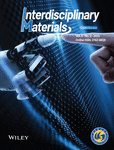Journal list menu
Export Citations
Download PDFs
COVER IMAGE
Outside Front Cover: Volume 4 Issue 2
- Page: i
- First Published: 26 March 2025
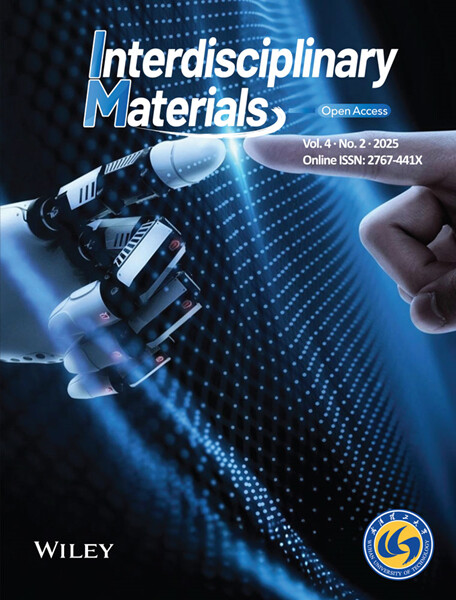
Outside Front Cover: The study reported in doi:10.1002/idm2.12233 examines recent progress in tactile sensing and machine learning for texture perception, focusing on sensor design principles, touch- and sliding-based approaches, and associated machine learning algorithms. This image illustrates that the robots can recognize object textures through touch/sliding sensors and improve manipulation dexterity, critical for applications in healthcare, education, and space exploration. The work also discusses challenges and future opportunities, aiming to advance tactile perception in humanoid robotics.
Outside Back Cover: Volume 4 Issue 2
- Page: ii
- First Published: 26 March 2025
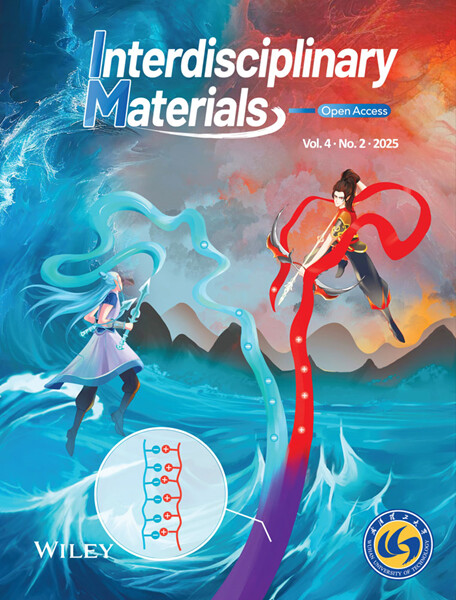
Outside Back Cover: The article of doi:10.1002/idm2.12239 presents a novel microgroovebased continuous-spinning (MCS) strategy for fabricating polyelectrolyte nanocomposite fibers with exceptional mechanical strength. This approach leverages shear flow within a Y-shaped microgroove hydrogel to induce the extension and alignment of irregularly coiled polymer chains, which enhances the electrostatic interaction sites between the ordered chains, thereby significantly improving the mechanical properties of the fibers.
ISSUE INFORMATION
REVIEW
Exploring the Active Lithium Loss in Anode-Free Lithium Metal Batteries: Mechanisms, Challenges, and Strategies
- Pages: 217-234
- First Published: 30 December 2024
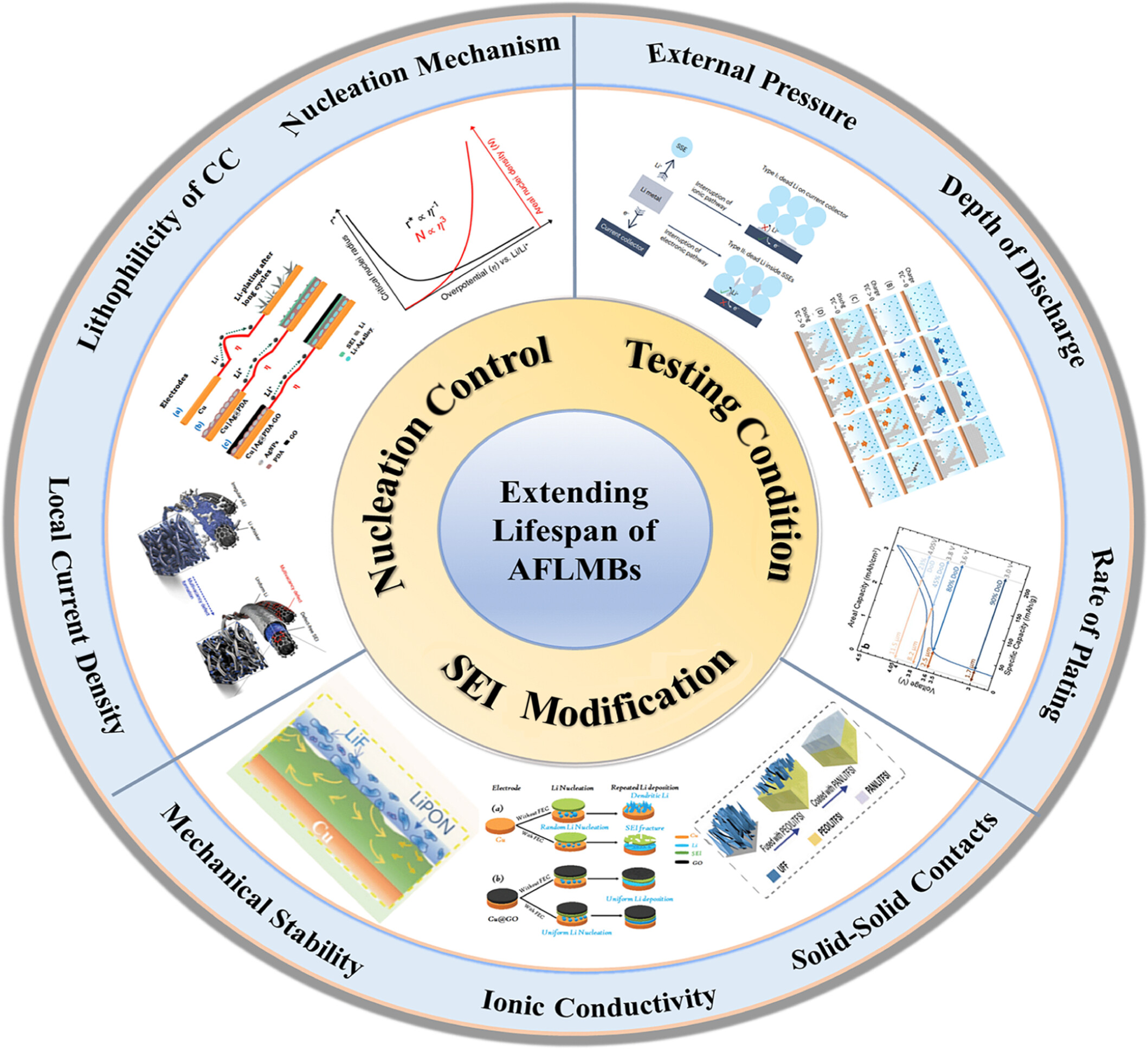
This review highlights the challenges faced by anode-free lithium metal batteries (AFLMBs) regarding cycling stability due to lithium loss during deposition. It focuses on the mechanisms of lithium metal nucleation and growth on the anode side while summarizing key influencing factors and strategies for improvement. The insights aim to advance research and enhance battery performance.
Recent Progress in Tactile Sensing and Machine Learning for Texture Perception in Humanoid Robotics
- Pages: 235-248
- First Published: 30 December 2024
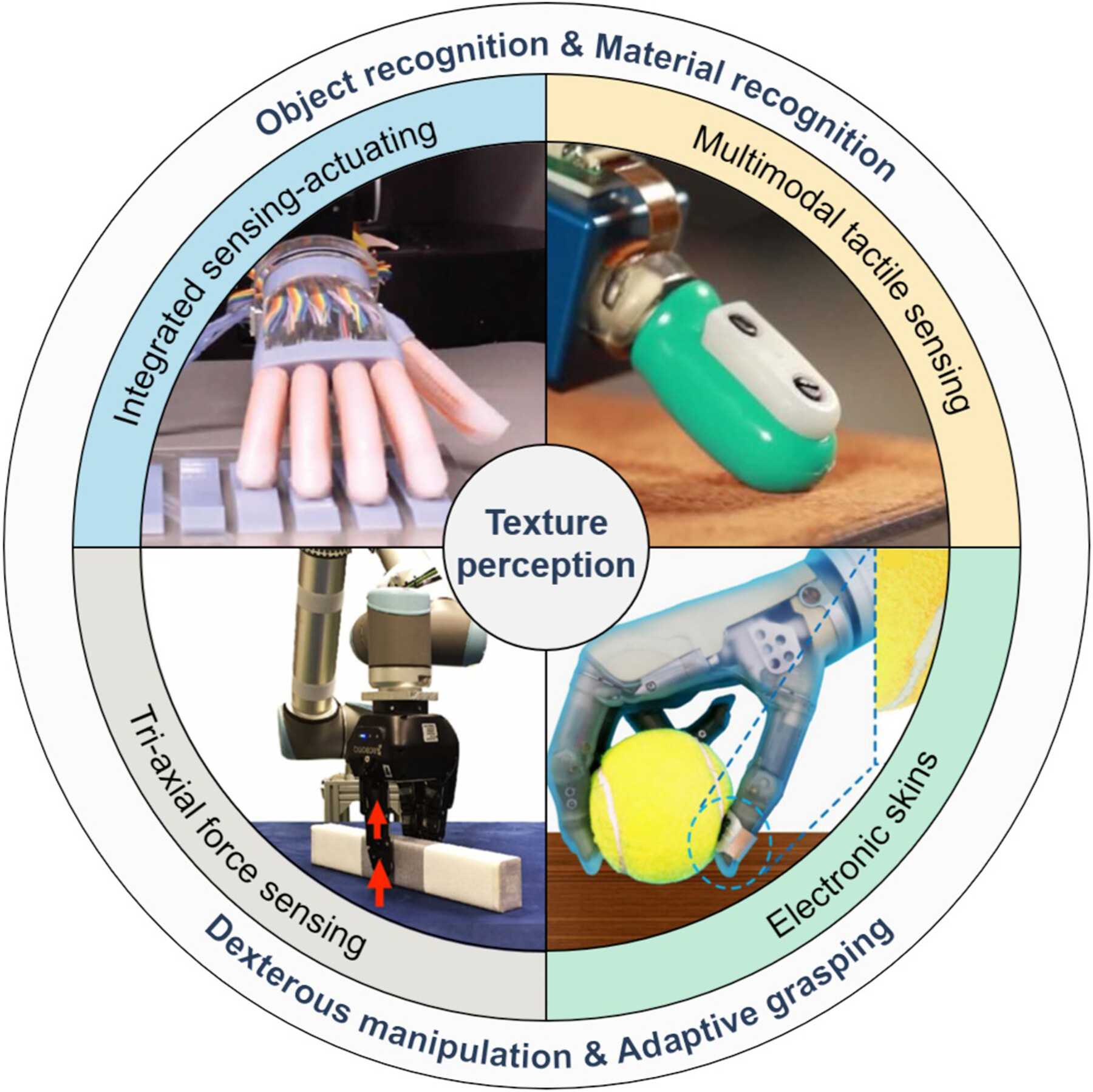
This review first explores the design and operational principles of tactile sensors used in texture perception, distinguishing between touch-based and sliding-based approaches. It then discusses various machine learning algorithms for texture perception utilizing these tactile sensors. Finally, this article addresses the current challenges and future opportunities, providing insights into the state-of-the-art developments and suggesting directions for future research.
Tailoring Hydrogen Storage Materials Kinetics and Thermodynamics Through Nanostructuring, and Nanoconfinement With In-Situ Catalysis
- Pages: 249-283
- First Published: 23 February 2025
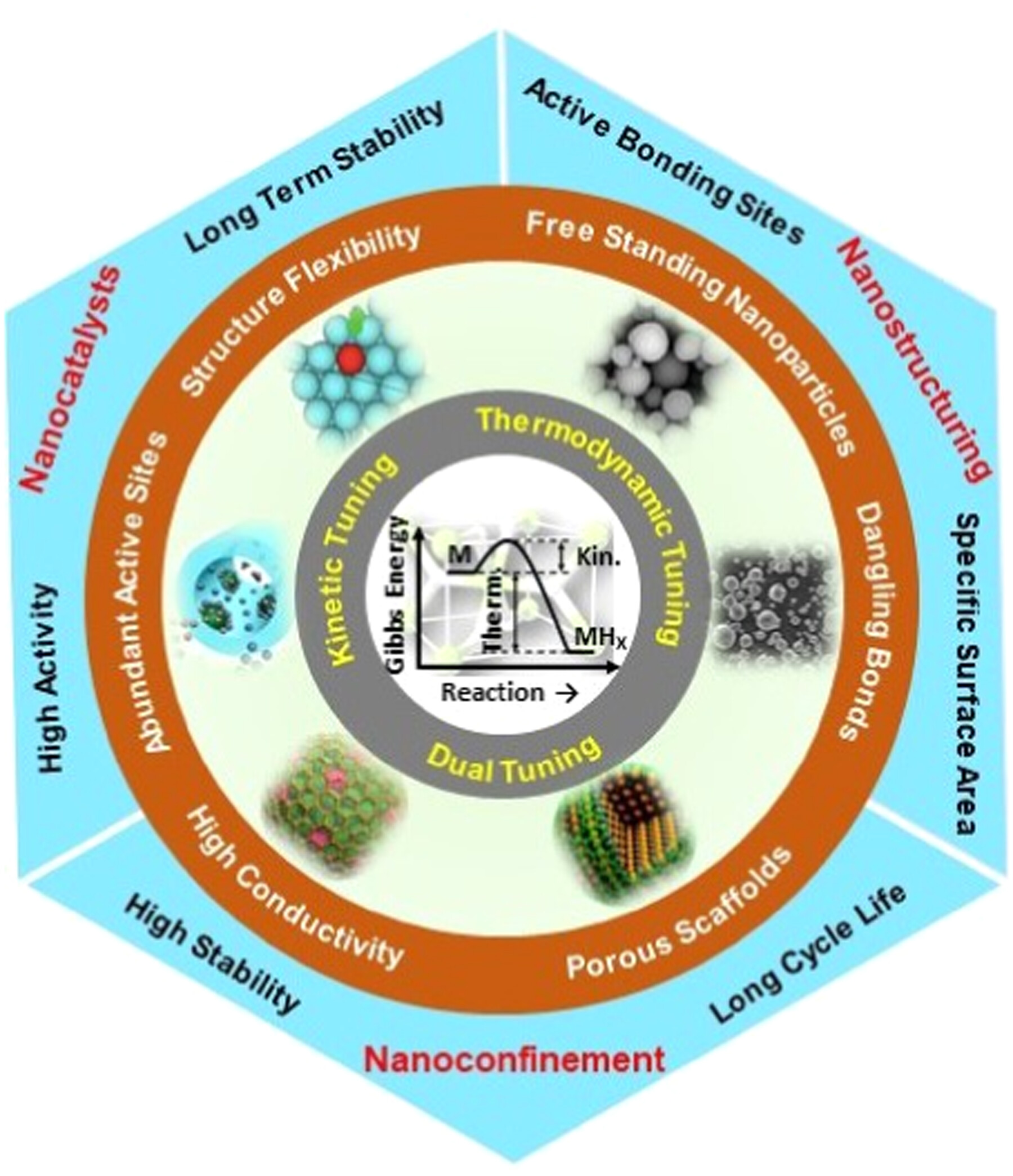
Stable thermodynamics and slow kinetics of hydrogen storage materials are the bottlenecks to its widespread applications. Thermodynamic and kinetic barriers can be tailored by doping nanocatalysts, reducing particle sizes, and nanoconfinement/core–shell structures. Hydrogen storage material's fast kinetics, lower operational temperature, high hydrogen ab/desorption capacity, and large number of cycles are significantly important for designing a practical hydrogen fuel tank.
Principle and Structural Design of MXene-Based Sensors Toward Smart Life
- Pages: 284-299
- First Published: 05 March 2025
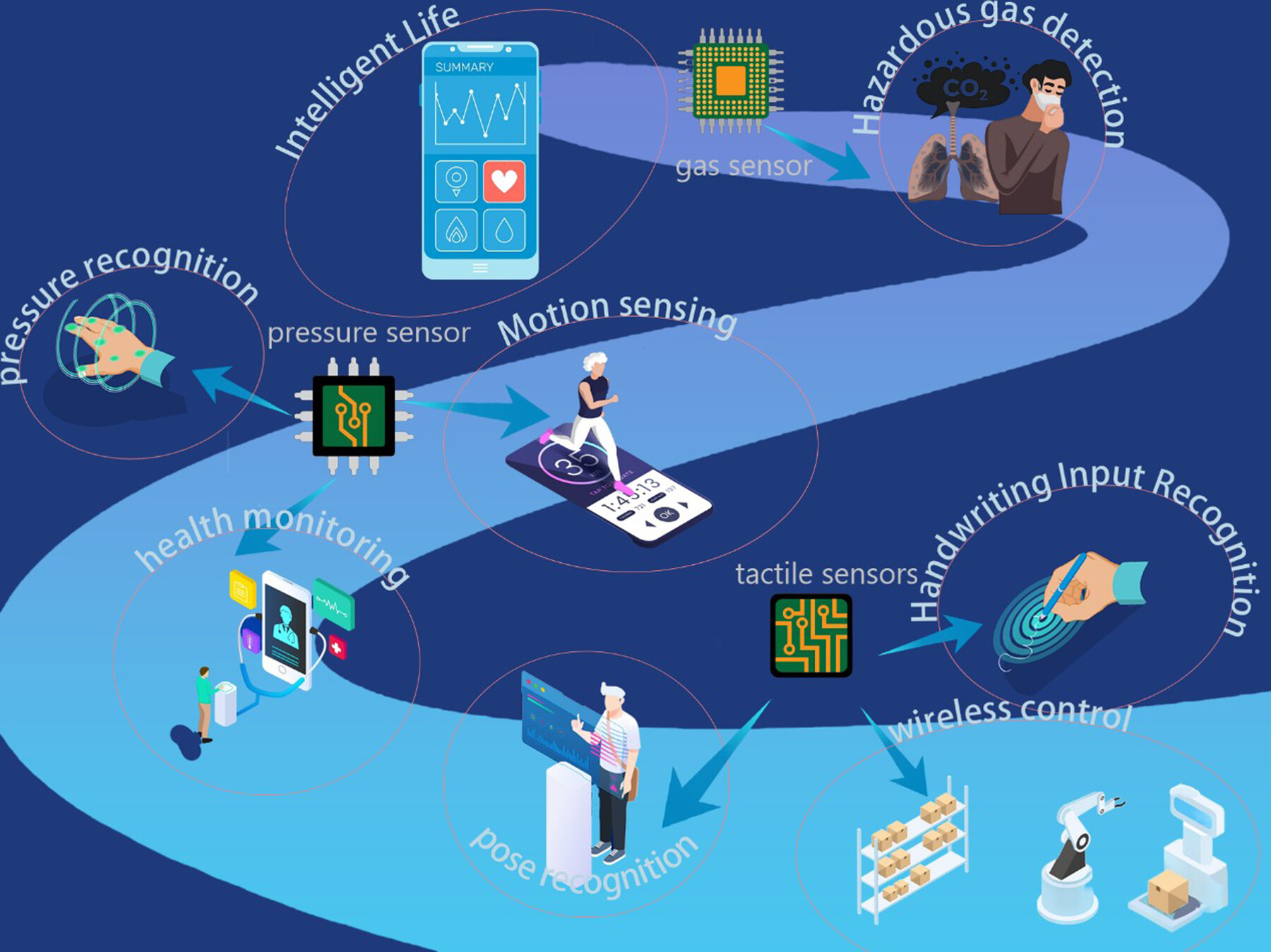
Two-dimensional (2D) transition metal carbides, carbon-nitrides, and nitrides (i.e., MXene) exhibit excellent mechanical properties, electrical conductivity, unique tunable surface chemistry, and two-dimensional structure. MXene-based material sensors demonstrate excellent sensing performance. This paper discusses the MXene sensing properties and their mechanisms of action in different types of sensors, outlining the unique role of these MXene-based sensors in the future of smart living.
RESEARCH ARTICLE
Optimizing Hydrazine Activation on Dual-Site Co-Zn Catalysts for Direct Hydrazine-Hydrogen Peroxide Fuel Cells
- Pages: 300-308
- First Published: 18 November 2024
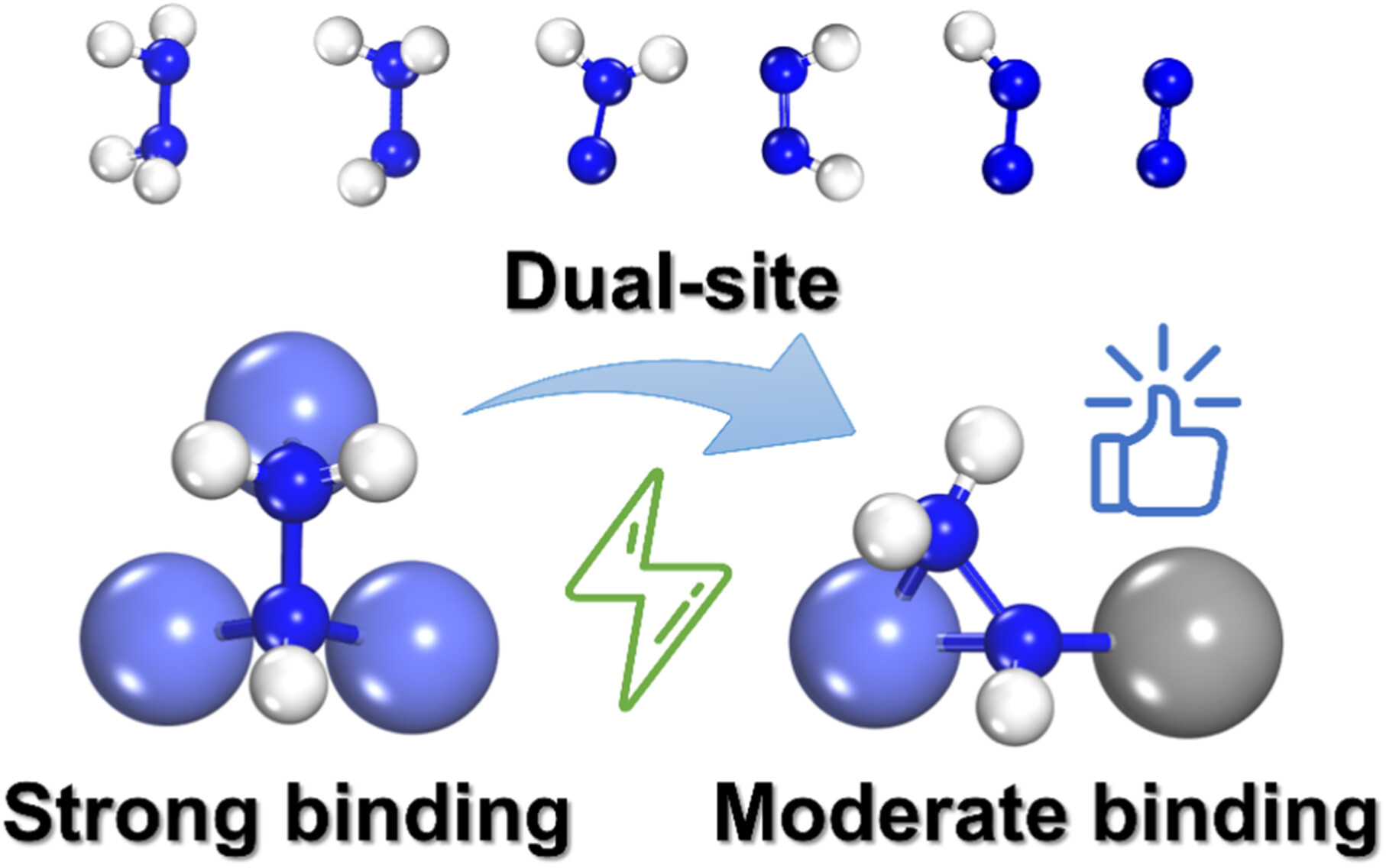
Catalytic activity of electrochemical hydrazine oxidation reactions (HzOR) is related to the binding energy of the intermediate N2H3*. Through density functional theory studies, the influence of metal surfaces on N2H3* binding energy in HzOR is investigated. The Co/ZnO catalyst, prepared by introducing zinc as a second element into cobalt, optimizes the binding energy to the key intermediate N2H3*, thus exhibiting enhanced activity for hydrazine oxidation.
Amorphous Metal Metaphosphate for Oxygen Reduction
- Pages: 309-320
- First Published: 01 December 2024
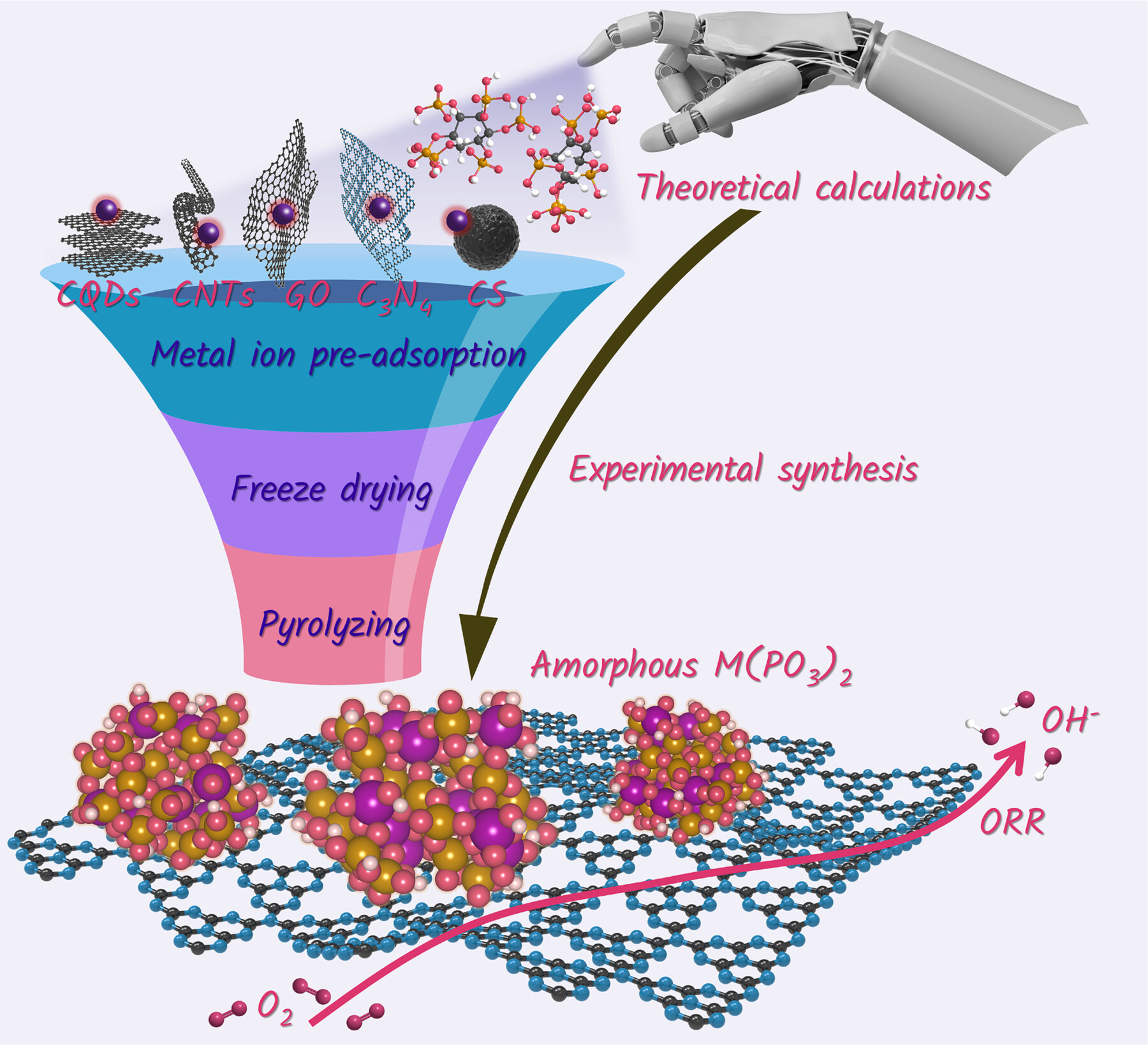
We used theoretical calculations to guide the synthesis strategy of amorphous metal metaphosphate. Both Mn(PO3)2-C/C3N4/CQDs (carbon quantum dots) and Mn(PO3)2-C/C3N4/CNTs (carbon nanotubes) exhibited excellent oxygen reduction reaction catalytic activity, with half-wave potentials of 0.85 V and 0.80 V, respectively.
A Stretchable, Attachable, and Transparent Polyionic Ecological Skin for Robust Self-Powered Interactive Sensing
- Pages: 321-332
- First Published: 29 November 2024
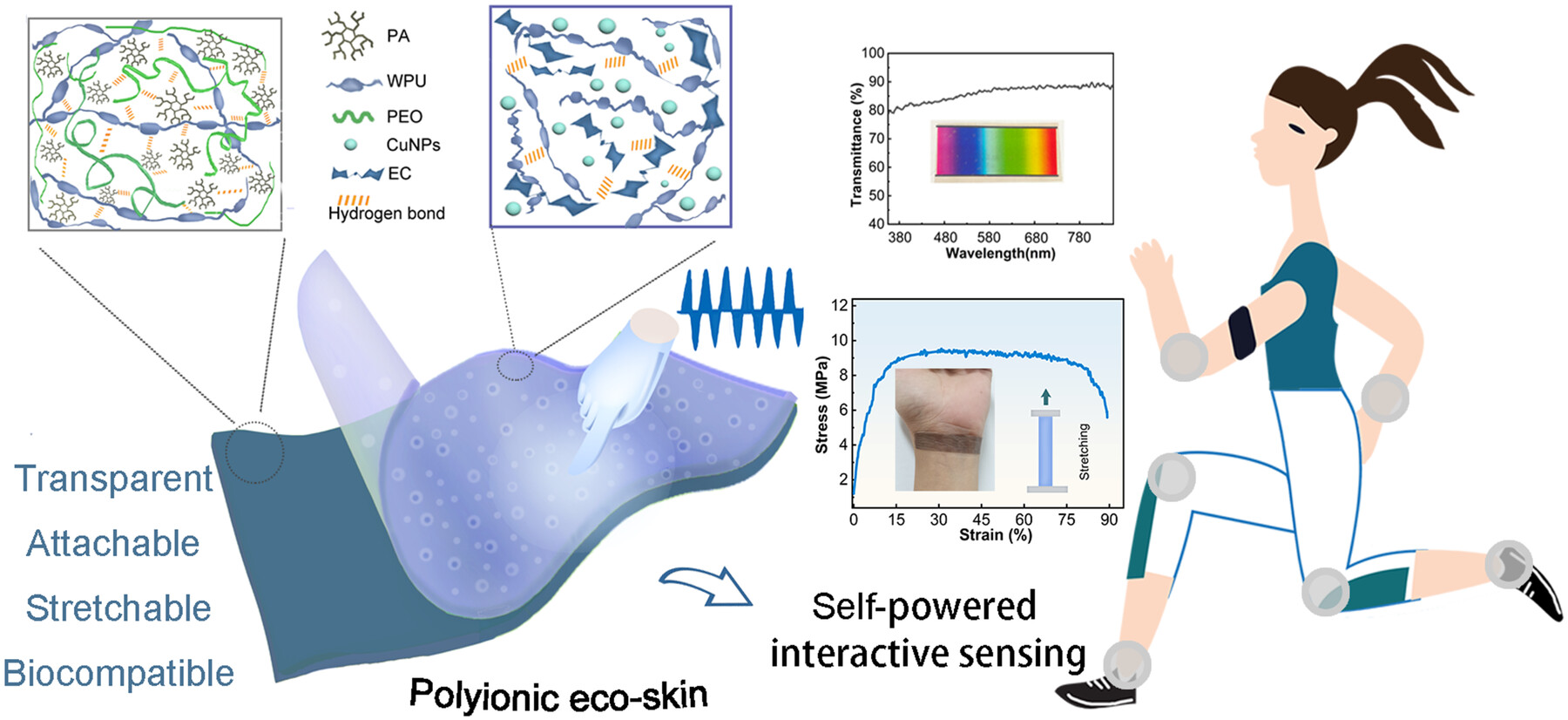
A stretchable, transparent, and attachable polyionic eco-skin with enhanced force-electric conversion performance is developed by configuring electroactive material and polyionic electrode. Integrating multiple characteristics enables the polyionic skin to support self-powered functionality and realize the accurate manipulation of targets. It holds promise for applications in self-powered security systems, interactive interfaces, and bionic robots, and advances human–cyber–physical intelligence integration.
Microgroove-Based Continuous-Spinning of Ultra-Strong Polyelectrolyte Nanocomposite Fibers With Aligned Polymer Chains and Nanosheets
- Pages: 333-342
- First Published: 26 February 2025
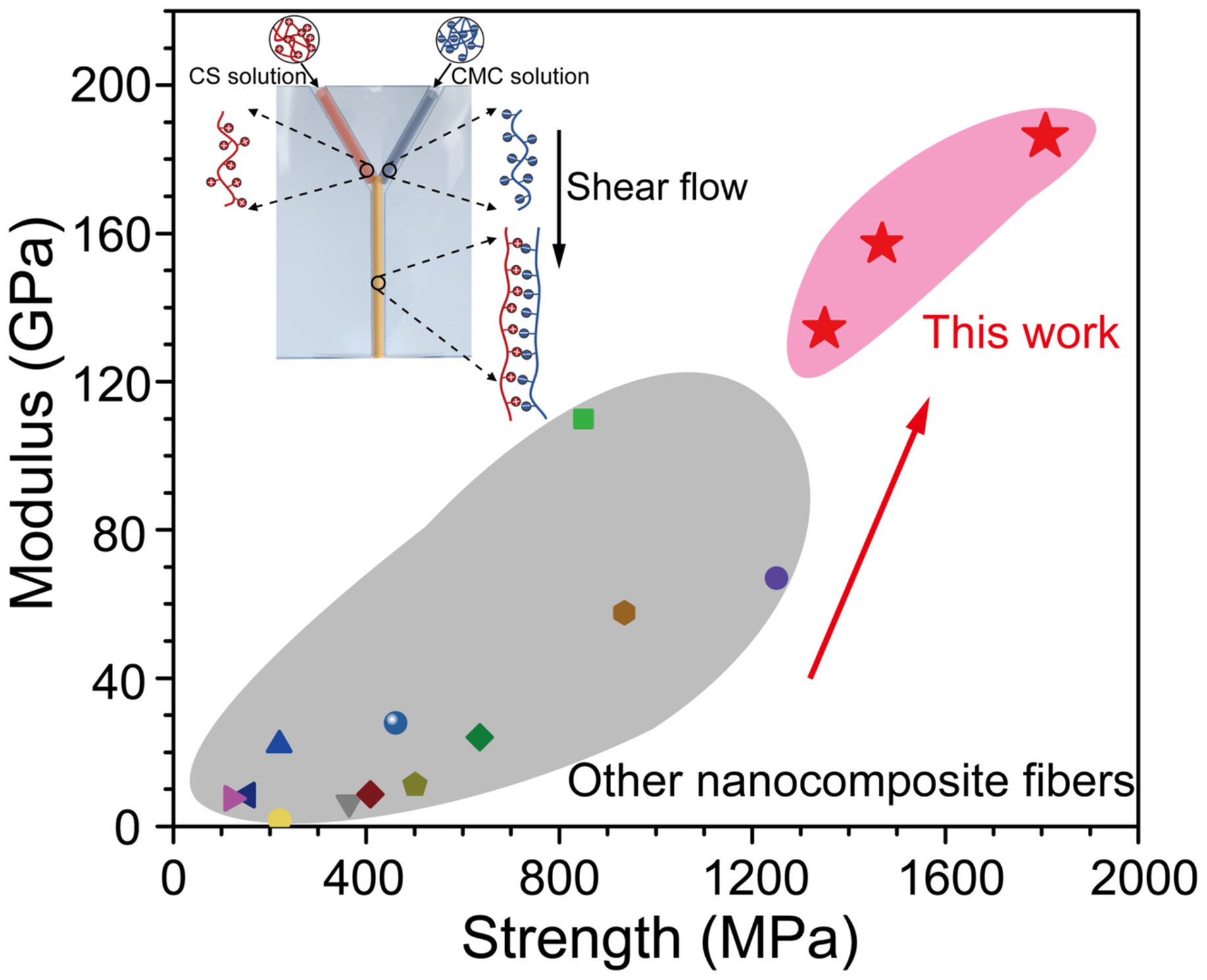
This work innovatively designs a hydrogel with Y-shaped microgroove to prepare ultra-strong polyelectrolyte nanocomposite fibers. The alignment of polymer chains and graphene oxide (GO) nanosheets that is induced by shear flow, along with the strong interactions between them, synergistically results in excellent mechanical properties with a tensile strength of up to 1783.8 ± 47.1 MPa and modulus as high as 183.5 ± 4.6 GPa.
Dual Vacancies-Engineered Two-Dimensional Sonocatalysts for Ultrasound-Augmented and PANoptosis-Driven Catalytic Tumor Nanotherapy
- Pages: 343-358
- First Published: 07 March 2025
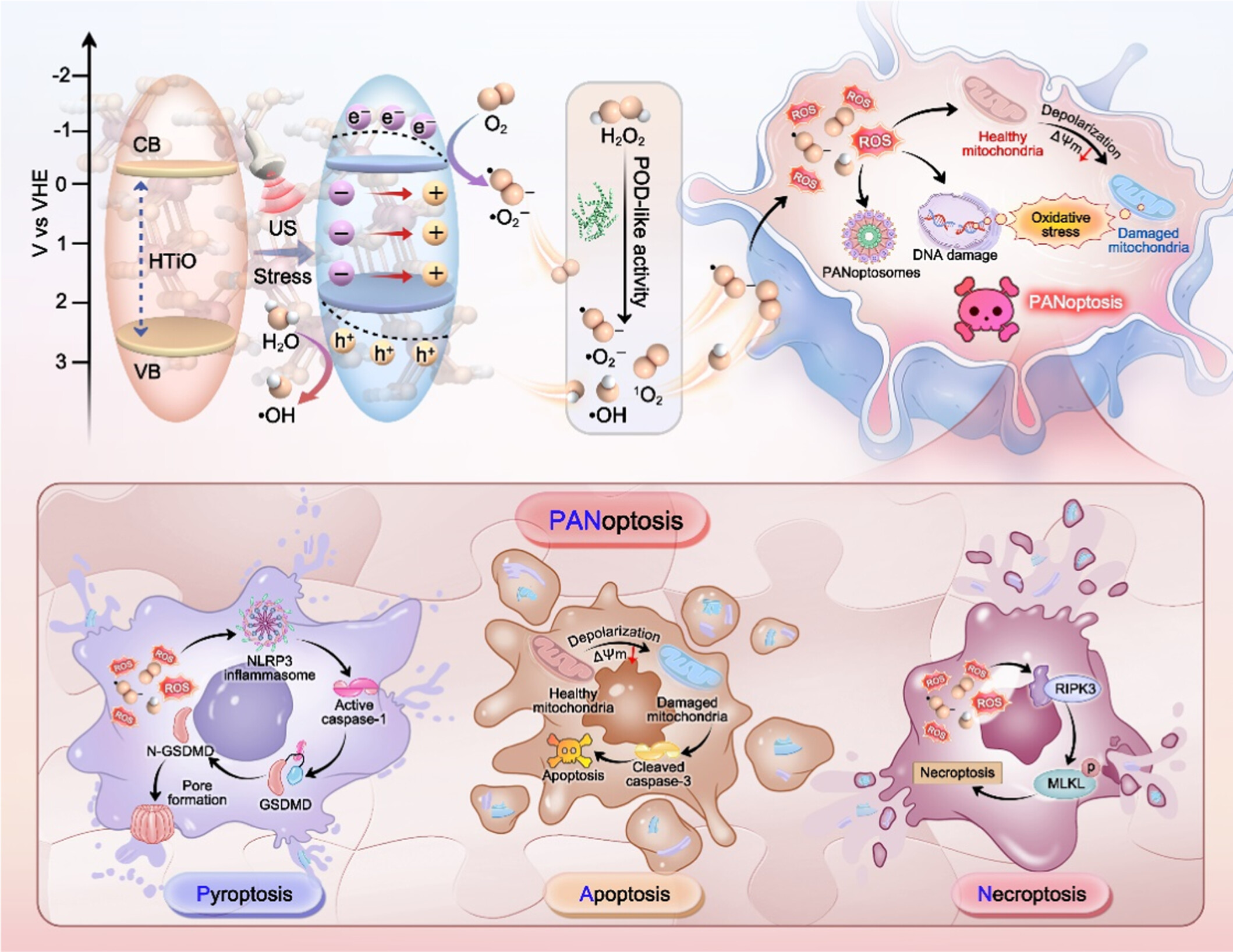
PANoptosis, a type of inflammatory programmed cell death, serves as a reliable approach to combat cancer by activating various cell death pathways, including pyroptosis, apoptosis, and necroptosis. In this study, we design and develop anion-cation vacancy-rich ultrathin HTiO nanosheets to function as inducers of PANoptosis, thereby triggering the activation of the PANoptosis process.
Carbon Quantum Dot Functionalized Nanofiber-Based Triboelectric Nanogenerator With Boosted Output and Fluorescence Function
- Pages: 359-372
- First Published: 11 March 2025
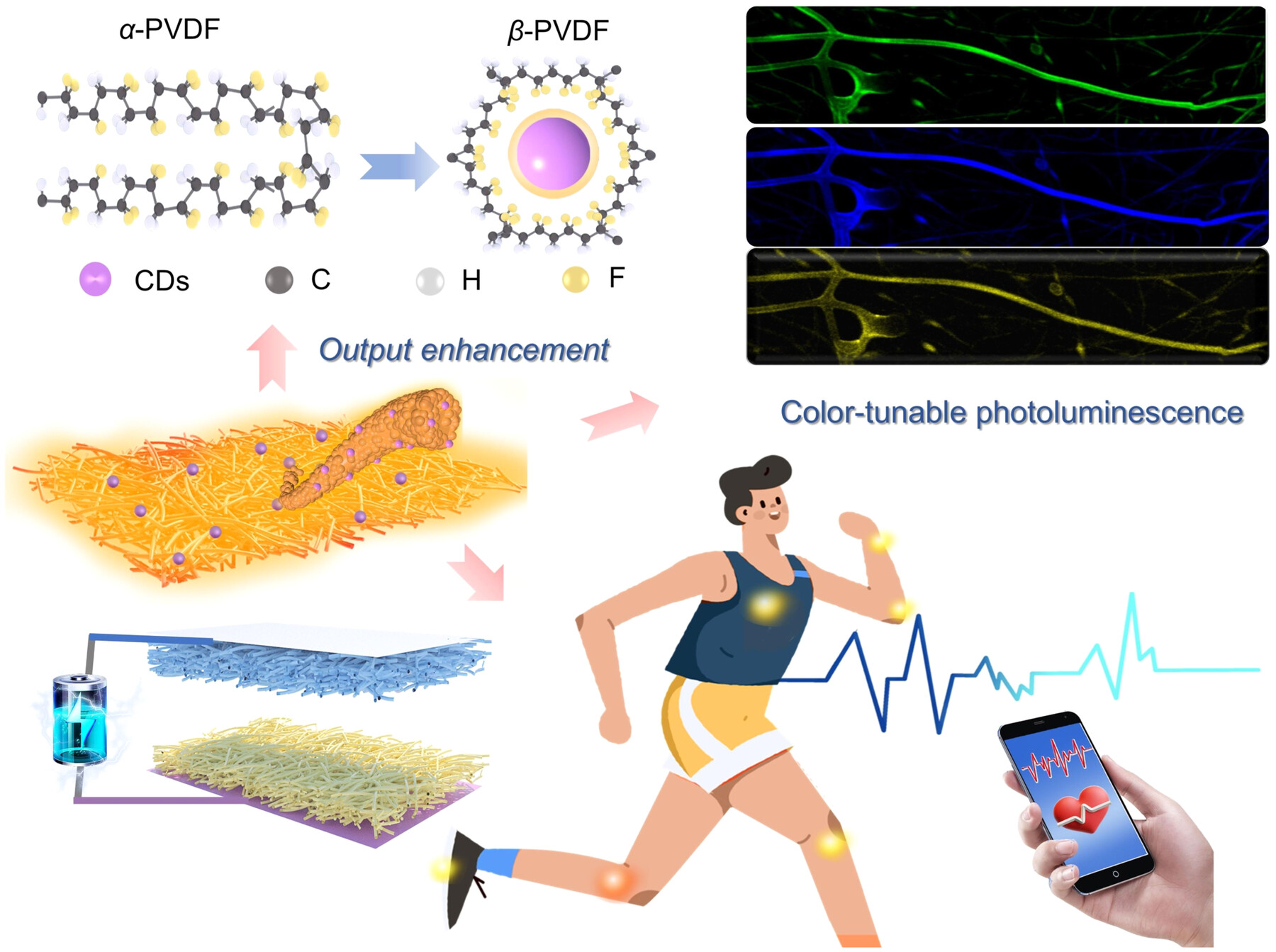
This work reports a novel nanofibrous composite by introducing carbon quantum dots (CDs) into electrospun poly(vinylidene fluoride) (PVDF) polymer to construct a high-performance TENG. This all-in-one multifunctional nanofiber with simultaneously integrated energy harvesting, self-powered sensing, and tunable photoluminescence demonstrates the promising potential for the application in smart wearable electronics.




